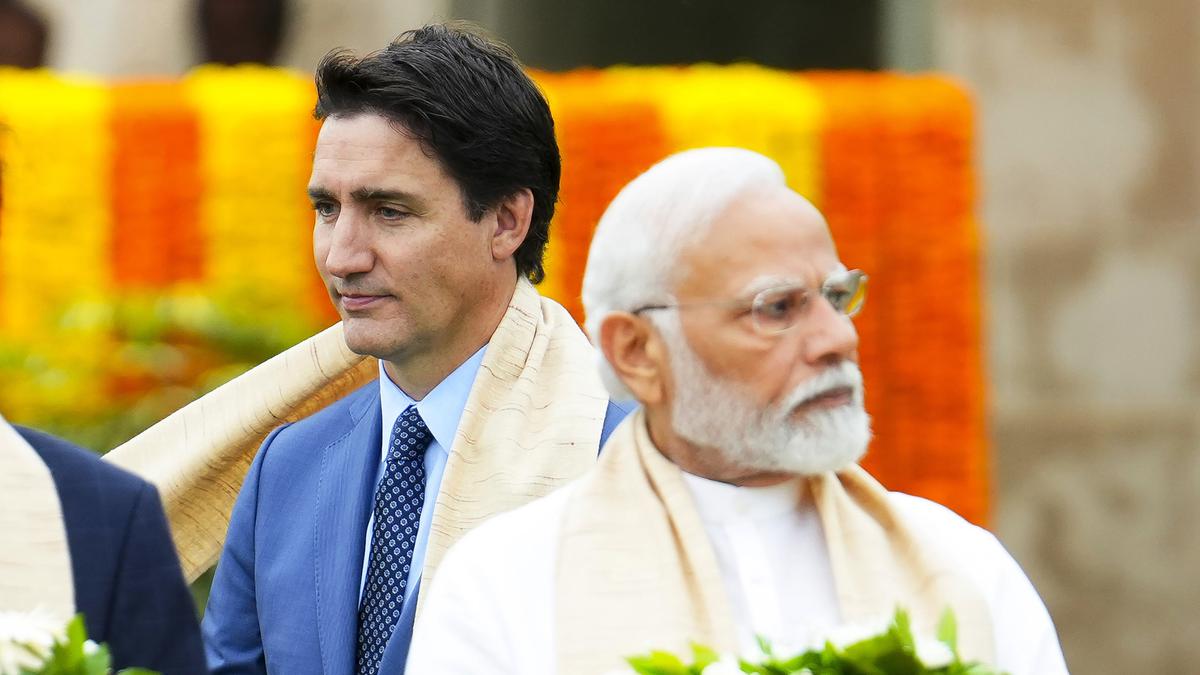
The potential economic and trade fallout of strained Indo-Candian diplomatic relations | Explained
The Hindu
The Hindu examines the various economic and trade consequences of the simmering India-Canada diplomatic spat.
The story so far: The current strain in diplomatic relations between Canada and India has raised concerns about the impact spiralling onto commercial and economic spheres of cooperation. Negotiations towards the Early Progress Trade Agreement (EPTA), which was to serve as an early transitional step towards the larger Comprehensive Economic Partnership Agreement (CEPA) now stand “paused.” This was widely expected to be sealed in a trade mission that was expected to arrive in India this October — now cancelled. Further concerns relate to the longer-term impact on the larger commercial and economic sphere should relations further deteriorate.
As per the Ministry of Commerce’s TradeStat database, in FY 2022-23, Canada was India’s 35th largest trading partner overall.
Further, as put forth in an earlier joint statement following the sixth Ministerial Dialogue on Trade & Investment (MDTI) in Ottawa in May, Canada-India bilateral trade in goods reached C$12 billion in 2022, growing 57% on a year-over-year basis; of this, the bilateral services trade contributed C8.9 billion to the overall figure.
According to Mohit Singla, Chairman at the Trade Promotion Council of India (TPCI) the trade between the countries is “pretty balanced.” He elaborates that Canada is ranked 14th in imports globally (with a share of 2.3%), but is 32nd in India’s export markets, with a share of 0.9%, currently exhibiting “low potential.” Having said that, he adds that the past two years have seen a sudden upsurge in exports from India at a CAGR of 32%. Other than mineral fuels, categories that have shown strong CAGR in this period include iron and steel, electrical machinery, rubber, nuclear reactors, apparel, pearls, and furniture and plastics, Mr. Singla says.
“This shows a strong surge in confidence by Canadian companies when it comes to sourcing from India across a wide range of categories. Clearly, the momentum has been building as compared to the pre-2020 period, when the overall export CAGR (2013-20) from India to Canada was just around 4%,” said Mr Singla.
From the Canadian perspective, India is a “priority market.” It was the North American country’s 10th largest trading partner. Global Canada (the international diplomacy and affairs department) has also said that “India will be a key partner as Canada strengthens its economic links to the Indo-Pacific under a new, comprehensive strategy for the region.”
India imported merchandise worth approximately U.S.$4.05 billion in FY 2022-23 from Canada and exported about U.S.$4.11 billion worth of goods — indicating a largely balanced trade. India’s primary export items include coal, coke and briquettes, fertilisers, iron and steel, and lentils. On the other hand, India’s major items of export are pharmaceutical products, iron and steel products, organic chemicals and marine products, along with apparel and textiles of varied forms and variants.

Air India has signed an agreement with Bengaluru Airport City Limited (BACL), a subsidiary of Bangalore International Airport Limited (BIAL), to develop a built-to-suit facility for the AME program that will feature modern classrooms, well-equipped laboratories for practical training and a team of qualified trainers.










